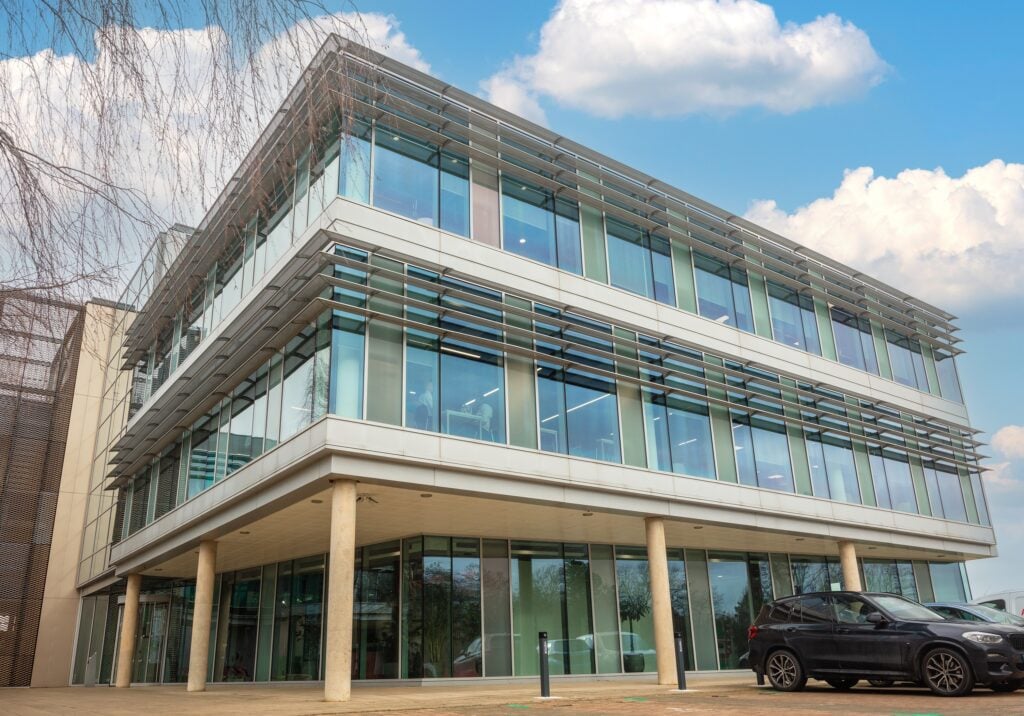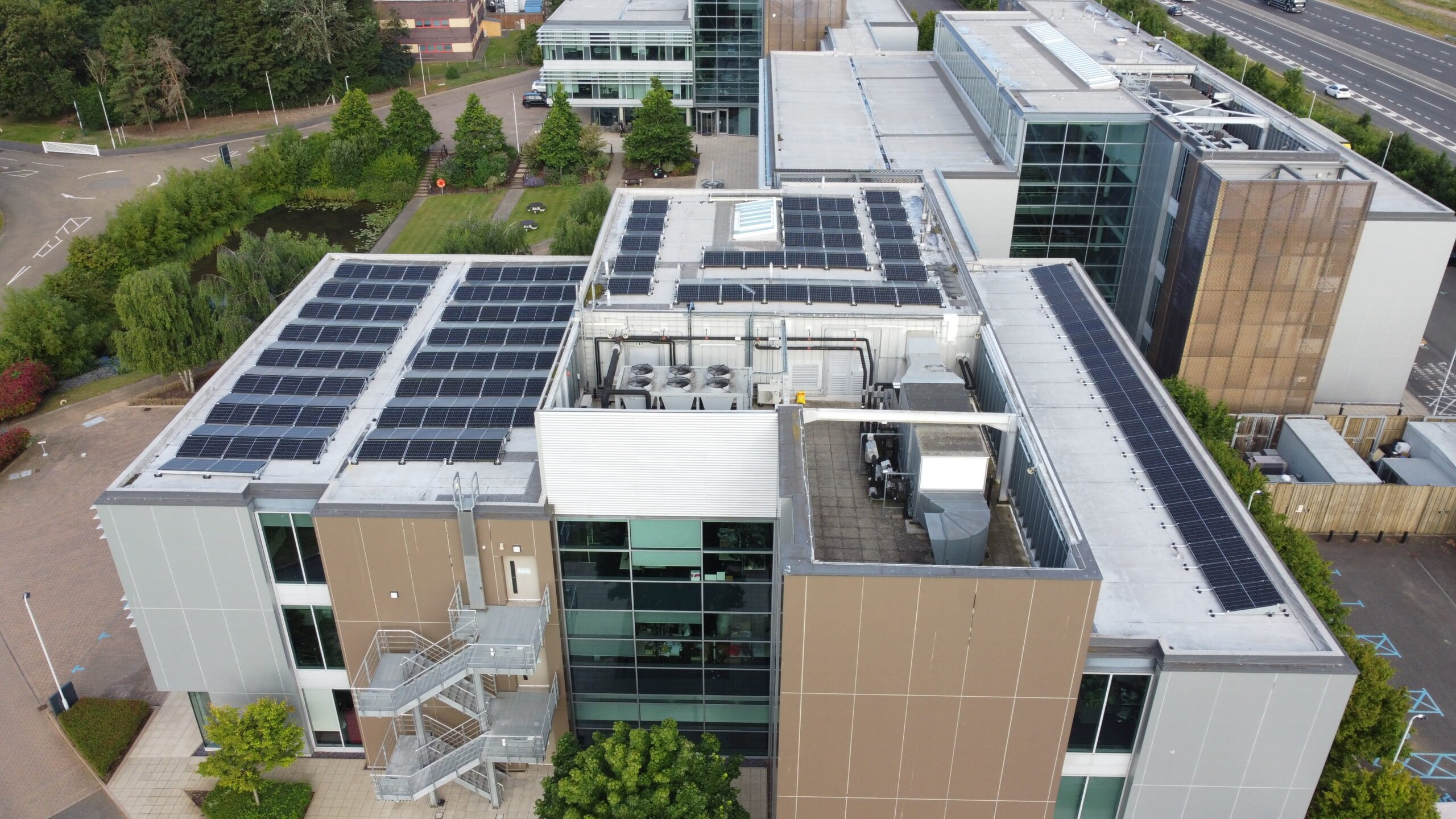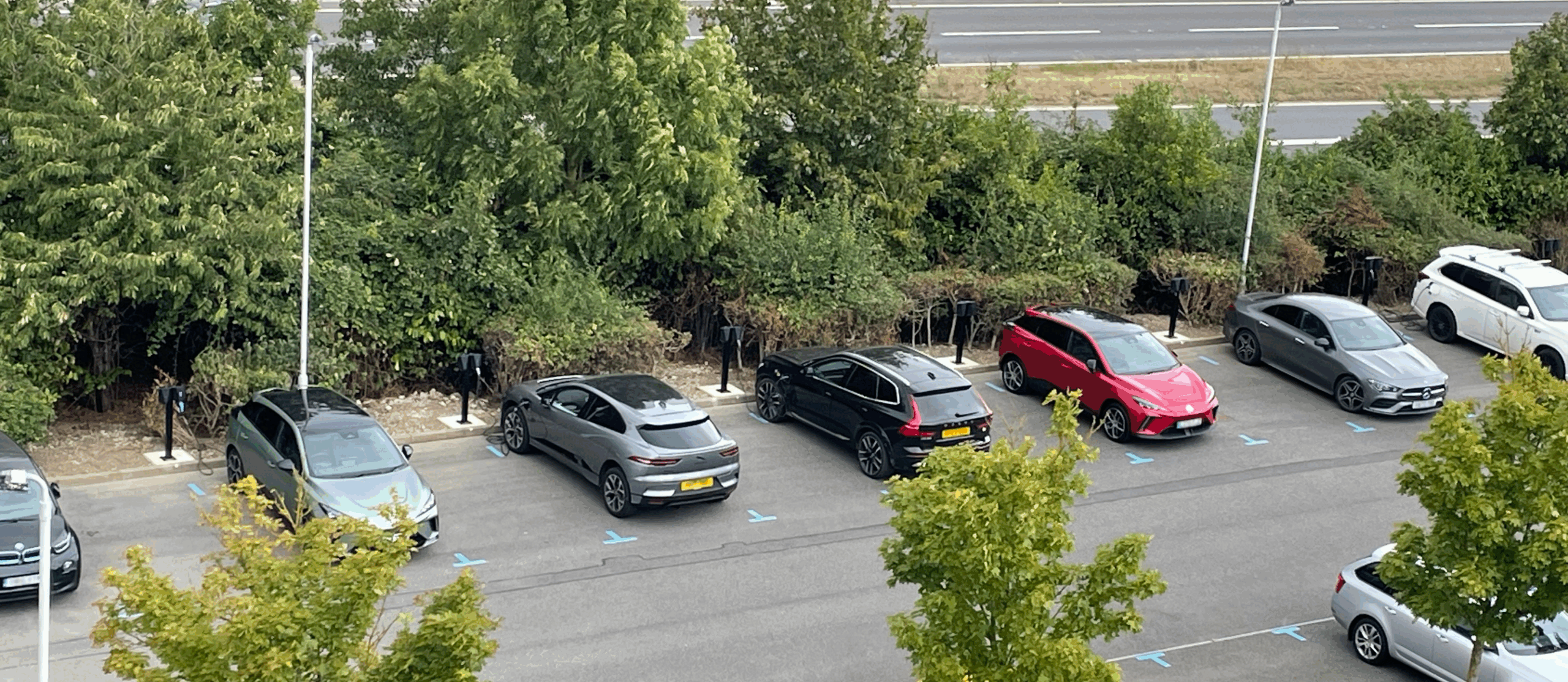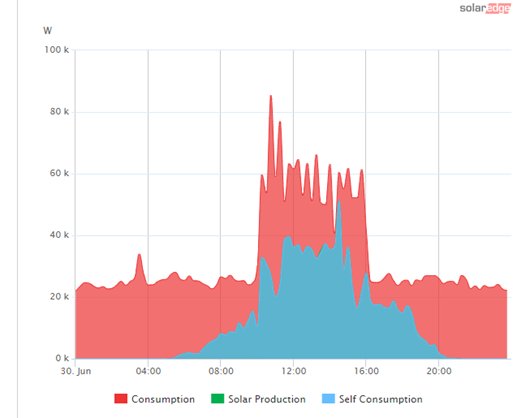Sustainable solutions: Making the Raspberry Pi office greener
We’re working hard to reduce our carbon emissions and, where possible, to reach net zero. An important part of this process is reporting our Scope 1 and 2 emissions — that is, direct emissions from sources owned or controlled by the company, and indirect emissions from generating the energy that the company purchases — across our business properties.

We moved into our new 28,000 sq ft headquarters in December 2023, and have since introduced several measures both to lower our emissions and to streamline reporting them. Built in 2008, the site remains in good condition; being a big glass box, it even benefits from natural heating. But in order to become more sustainable, the building requires some retrofitting, and we’ve identified four key areas that will help us achieve net zero.
Solar power
Since installing a fleet of rooftop solar panels in June 2024, we’ve managed to reduce our electricity consumption by 20%. The 85.5 kW East–West array, with its 66.6 kW inverter, currently covers 33% of our electricity use. While long, sunny days provide ample energy for us, the heat they bring also increases the demand for air conditioning, which is both costly and energy-intensive; we expect our solar energy coverage to fluctuate with the seasons, averaging out at 20%.
Our long-term goal is to install more solar panels to minimise the impact the changing weather has on our emissions. Plans are already under way to triple our current solar energy generation.

EV charging stations
Monitoring staff travel to and from work is something that we are required to do, as commuting contributes significantly to our overall emissions. As part of our efforts to reduce our grey fleet impact, we installed 24 Easee EV chargers in August 2024 to help staff who need to drive to work adopt more electric vehicles. The chargers are capable of toggling between a single and a three-phase power supply, meaning a car could potentially be fully charged in three to four hours.
So far, the scheme has proven successful: looking at the car park at the time of writing, 12 of the 45 cars currently parked are electric, and a total of 35 staff members are signed up to use the service.

Turning off the gas
We have reconfigured our plant room by removing the gas-powered calorifier that provided hot water to the central core and shower block, replacing it with a heat pump system that delivers a coefficient of performance (COP) of four or above.
Following the success of this upgrade, we are now looking to replace our gas boilers with more efficient cascading heat pumps. This plan is still in the works, but we hope to have the new system up and running sometime next year.
Attacking the out-of-hours base load
Although the office is empty out of hours, the building still consumes a base load of around 25 kW per hour, the vast majority of which is being used by our server room as we can’t shut that down overnight. This equates to roughly 350 kWh per 24-hour cycle. By sub-metering our energy, we hope to assess and identify where this leakage is coming from and to reduce it.

This is more complicated than it sounds, as the current data shows that the burn is spread thinly across the site, rather than between a few key pieces of equipment. We are aiming to lower our base load by 5 kW per hour, for an overall reduction of 75 kWh per day, 2250 kWh per month, and 27,000 kWh per year.
From insight to action
Tthese initiatives might seem small in the grand scheme of corporate sustainability, but they are already proving that incremental changes can lead to big results. Not only are we making our office greener, but the measures we are taking to monitor and report our emissions are making us smarter about our energy use, inevitably shaping our next steps towards achieving net zero.
The post Sustainable solutions: Making the Raspberry Pi office greener appeared first on Raspberry Pi.
from News - Raspberry Pi https://ift.tt/vV5HpFO
Comments
Post a Comment